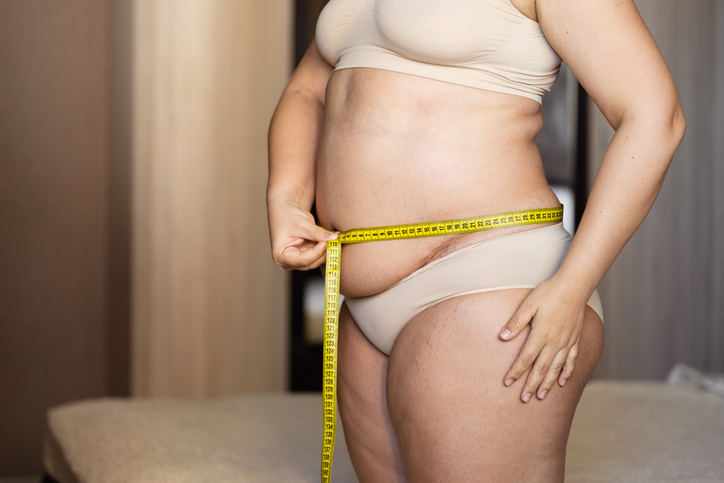You May Want a Smaller Waistline, Especially If You Plan to Get Pregnant

By Joy Stephenson-Laws, JD, Founder
I recently blogged about how both men and women can prepare themselves physically and mentally to conceive a child even if they are not ready to at this moment. In many ways, you can never prepare too early. For example, ideally you will prepare years in advance by maintaining a healthy, nutrient-rich diet and abstaining from alcohol and smoking. Of course, I hope that a healthy lifestyle is the norm for everyone regardless of having children or not, but for now let’s focus on preconception health and fertility.
There are many causes of infertility for both women and men.
Infertility (both male and female) is currently a major issue in the United States. When a couple has issues conceiving, the attention is often put on the female, however, causes of male infertility may include low testosterone, certain genetic disorders, erectile dysfunction and more. With that said, this blog is going to focus on female infertility - due to a recent study I will share shortly.
“In the United States, 1 in 5 women between 15 and 49 years old struggle with primary infertility and about 1 in 20 women struggle with secondary infertility,” reports the Cleveland Clinic.
Causes of female infertility may include thyroid disease, polycystic ovarian syndrome (PCOS), poor egg quality, endometriosis, older age and more. Perhaps what is not as widely discussed is the connection between excessive weight and infertility.
“The risk of infertility has been shown to be threefold higher in obese than in non-obese women, and several studies have demonstrated that the obese females need longer time to pregnancy,” according to a study published by the National Institutes of Health (NIH).
And perhaps even less discussed is the issue of waist circumference as it pertains to female infertility. A recent study conducted in China found evidence suggesting that waist circumference may be a predictor for female infertility.

(13 Reasons Why You Should be Watching Your Waistline)
The study analyzed more than 3,000 females between the ages of 18 to 45.
“For every 1cm increase in waist circumference, the risk for infertility increased by 3 percent. Women in the highest quintile of WC had more than a doubled risk for infertility versus the lowest quintile (odds ratio, 2.64),” according to this Medical Xpress report discussing the study.
What is particularly noteworthy of this study is that the researchers found these results independent of body mass index (BMI). So in other words, you could have a healthy BMI but a waist circumference that could put you at risk for infertility.
“In people who are not overweight, having a large waist may mean that they are at higher risk of health problems than someone with a trim waist,” according to Harvard T.H. Chan School of Public Health.
Aside from infertility, having a large waist has been linked to health conditions such as cardiovascular disease, type 2 diabetes, hypertension and more.
All this 'new' information confirms my prior research about being healthy and I have discussed many times that body composition, belly fat and waist circumference are much better parameters for measuring health compared to BMI. And having a large waist is often accompanied with having too much belly fat.
Be proactive.You might be wondering - How do I even know if I have what would be considered a large waist?
Check out Harvard T.H. Chan School of Public Health. This institution goes into great detail on how you can tell if your waist is too large (male or female). A general rule of thumb is that more than 35 inches is considered large for females, and more than 40 inches for men.
As always, maintaining a healthy body composition through a balanced and nutrient-rich diet is a good thing. It is also extremely important to exercise regularly (both a combination of cardiovascular exercise and strength training). Speak with your doctor or a competent healthcare professional on what you can do to maintain a healthy waist circumference and not accumulate too much belly fat.
(For Postmenopausal Women, Having More Junk in The Trunk May Be Better Than Being Thick in the Waist)
I also want to reiterate the importance of taking a body composition test and not just focusing on your body mass index or the number on the scale. A full body composition test will not only determine your BMI but also let you know how much fat you may need to lose, how much muscle you may need to gain and much more.
Finally, try to maintain nutritional balance by taking a comprehensive nutrient test in order to determine if you have any nutrient imbalances or deficiencies which may be hindering your ability to lose weight and belly fat. If you have imbalances, a competent healthcare professional can help you make the necessary dietary changes and possibly recommend quality supplements you can include in your diet.
Enjoy your healthy life!
Disclaimer: This article is not intended to provide medical advice. Please consult with your doctor or another competent healthcare practitioner to get specific medical advice for your situation.
The pH professional healthcare team includes recognized experts from a variety of healthcare and related disciplines, including physicians, attorneys, nutritionists, nurses, and certified fitness instructors. This team also includes the members of the pH Medical Advisory Board, which constantly monitors all pH programs, products, and services. To learn more about the pH Medical Advisory Board, click here.



